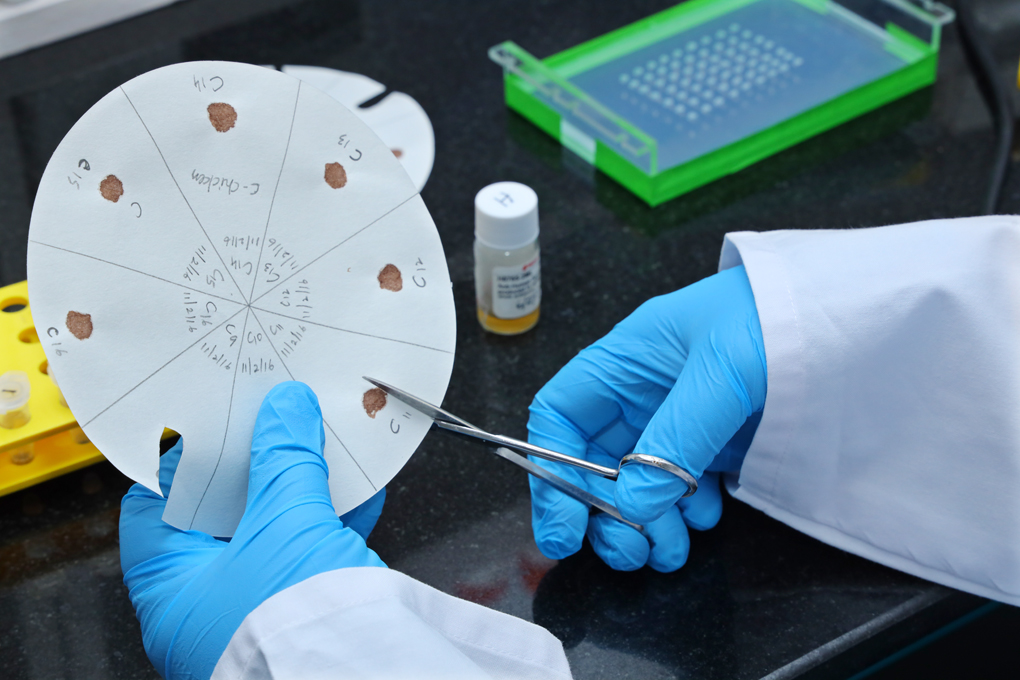
Facility In Charge: Ms. T. Sumathi, Technical Officer-C
Precipitin test depends upon the interaction between a saline extract of the blood meal under examination and suitable antiserum, usually prepared from rabbit. A positive reaction is indicated by the formation of a white precipitate, which is the result of the insoluble product formed under specified conditions, when antigen and antibody are united. The absence of a precipitate therefore indicates that no antigen-antibody reaction has occurred.
Serological techniques based on the precipitin reaction have been widely used for the identification of human or animal origin of blood meal of mosquito and thereby to define their host preference, vectorial importance generally and locally. Mosquito blood-meals are routinely identified by subjecting a mosquito blood meal of an engorged mosquito to tests with suitable antiserum such as, human, bovine, avian. By studying arthropod blood-feeding behaviour, we can gain diverse insights as the evolution of host specificity between vertebrates and their ectoparasites. In addition, we can understand how arthropod blood host choice and feeding behaviour influences pathogen transmission.
Historically, arthropod bloodmeals were identified by serological methods such as the enzyme-linked immune diffusion. The system is generally conducted in small glass plate coated with agarose gel with wells formed 2 mm diameter width, 3 mm depth and 8 mm diameter between the wells. A precipitate formed at the interface between antigen and serum constitutes a positive reaction.
Method: Immuno-diffusion (Agarose gel diffusion): In the gel diffusion technique, antisera and control sera (source of blood meal) are introduced into Certain wells cut into an agarose gel layer, which cover the upper surface of the glass slide.

Materials required: Sources of Mosquito Blood Meals, gel plate, Pasteur pipette, Eppendorf tubes, Antiserum, Agarose, etc.,
Test procedure: Following the methodology described by Ref: Collins, R.T., Dash, B.K., et al An Adaptation of the gel diffusion technique for identifying the Sources of Mosquito Blood Meals. WHO/VBC/83.873